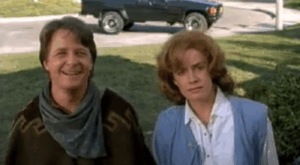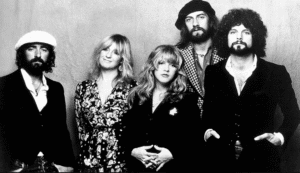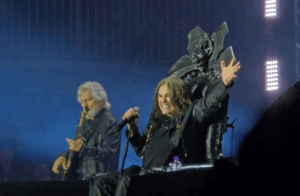The Bottom Of The Barrell Of Pink Floyd Songs

via Pink Floyd / Youtube
At their peak, Pink Floyd showcased a variety of artistic qualities: they were playful and whimsical in their psychedelic nature, they used their music to convey political messages, they were unconventional and innovative in their musical experiments, and they delved into a space-themed rock, and blues while offering insightful social commentary through entire albums.
Exploring such a wide range of musical styles naturally led them down some unsuccessful paths. In fact, a few of their albums ventured even further, featuring songs that completely disregarded warning signs and ended up being disappointing. However, none of their albums were entirely devoid of redeeming moments, even if they occasionally left listeners puzzled.
We sifted through Pink Floyd’s discography, spanning from the less successful period with Syd Barrett to the less impressive works during the David Gilmour era, with several missteps by Roger Waters in between.
1. The Piper at the Gates of Dawn (1967) – “Pow R. Toc H.”
In the late 1960s, Barrett co-wrote an instrumental track on Pink Floyd’s debut album. The band playfully experimented with whimsical percussive sounds before transitioning to Richard Wright’s skillful piano playing, reflecting their spontaneous and exploratory studio sessions.
2. A Saucerful of Secrets (1968) – “Corporal Clegg”
During Pink Floyd’s transition as Barrett departed, this Waters-penned song features Nick Mason on lead vocals, Gilmour on kazoo, and laughter in the backing vocals. It’s a disturbingly fun tune about an unstable veteran, hinting at Waters’ World War II obsession.
3. More (1969) – “A Spanish Piece”
This insignificant yet easily forgotten mistake is not particularly remarkable for Gilmour’s flamenco skills or his unsuccessful attempt at portraying a Spanish stereotype. However, it stands out as the first songwriting credit for the guitarist in Pink Floyd. Gilmour improved his skills over time.
4. Ummagumma (1969) – “Several Species of Small Furry Animals Gathered Together in a Cave and Grooving with a Pict”
Pink Floyd meets the Chipmunks. Waters’ Ummagumma experiment blends vocal effects and tape speeds, though it may rank low in replay value. Yet, amidst the whimsical rhythms and imaginary creatures, an impressive quality emerges. The track’s “Scottish” farmer foreshadows Waters’ role as The Wall’s fearsome schoolmaster.
5. Atom Heart Mother (1970) – “Alan’s Psychedelic Breakfast”
This 13-minute piece of musique concrete satisfies a curiosity that likely no Pink Floyd enthusiast has ever expressed: “What does roadie Alan Styles like for breakfast, can we hear him making it and could the guys in the band noodle around (in a very non-psychedelic manner) as he fries bacon, muses about marmalade and pours a bowl of Rice Krispies?”
6. Meddle (1971) – “Seamus”
One more mistake can be found in this song, where Steve Marriott’s named dog joins in with Gilmour, Waters, and Wright as they perform a basic blues tune. “Seamus” is consistently considered by fans as a contender for the most foolish track in Pink Floyd’s collection. Without a doubt, it is the weakest song on an otherwise fantastic album.
7. Obscured by Clouds (1972) – “Absolutely Curtains”
Pink Floyd’s second soundtrack album for director Barbet Schroeder concludes with a seamless transition from a restless instrumental to a captivating Mapuga tribe chant, which proves more interesting.
8. The Dark Side of the Moon (1973) – “Speak to Me”
Though not a typical song, this unusual overture previews key elements of Dark Side. It includes clattering money, crazy laughter, ticking clocks, and a distinctive heartbeat that connects the album’s first and last tracks, symbolizing the endless loop of human experience.
9. Wish You Were Here (1975) – “Welcome to the Machine”
Wish You Were Here contains no weak songs, including this one. It showcases studio mastery, with Gilmour embodying the human/mechanical contrast. Whether about the music industry or dystopian society, the track skillfully combines warm acoustic guitars with cold synthesizers and Gilmour’s robotic vocals. “Welcome to the Machine” maximizes unease through concise lyrics and meticulous sound layers, creating a three-dimensional recording.
10. Animals (1977) – “Pigs on the Wing (Part 1)”
Pink Floyd, including Waters, isn’t known for love songs. The acoustic bookends of this LP depict love as a better option amidst modern misery. The first part, with just vocals and guitar, succinctly introduces the album’s gloomy concept.
11. The Wall (1979) – “Don’t Leave Me Now”
Pink Floyd’s album, The Wall, encompasses their best, middling, and worst elements. Among the tracks, none are as unpleasant as this sluggish composition filled with disharmony and misogyny where Waters, as Pink, repeatedly whines, “Why are you running away?” The real torture is listening to his screechy, yelping vocals, reminiscent of an alley cat.
12. The Final Cut (1983) – “Two Suns in the Sunset”
Waters’ Pink Floyd era, excluding Live 8, culminates in a nuclear holocaust. The protest song employs scare tactics, including a line about losing loved ones’ voices and a girl screaming “Daddy, Daddy!” To ensure clarity, lyrics like “As the windshield melts and my tears evaporate, leaving only charcoal to defend” are followed by a cheesy sax solo, intensifying the apocalyptic theme.
13. A Momentary Lapse of Reason (1987) – “A New Machine (Part 1)”
The song “A New Machine” is divisive among Pink Floyd fans. Some find the vocoder vocals and robotic sound irritating, while others appreciate the attempt to bridge the gap between the band’s earlier and later works. However, it is up to the individual listener to decide whether they enjoy the song or not.
14. The Division Bell (1994) – “A Great Day for Freedom”
In an effort to match Waters’ cynical view of global politics, Gilmour, assisted by his future wife Polly Samson, offers a pessimistic assessment of post-Soviet Europe. While the criticisms are valid, the song itself is dreary and lacks vitality, even when Gilmour shifts from singing to playing the guitar.
15. The Endless River (2014) – “Side 3: The Lost Art of Conversation/On Noodle Street/Night Light/Allons-y (1)/Autumn ’68/Allons-y (2)/Talkin’ Hawkin’”
Side 3 has its charms, notably “Autumn ’68,” featuring Wright’s organ playing. The title nods to his song “Summer ’68.” The “Allons-y” bookends resemble “Run Like Hell” but sound distinctly Floydian. However, the rest of Side 3 is the least impressive material on The Endless River.




































